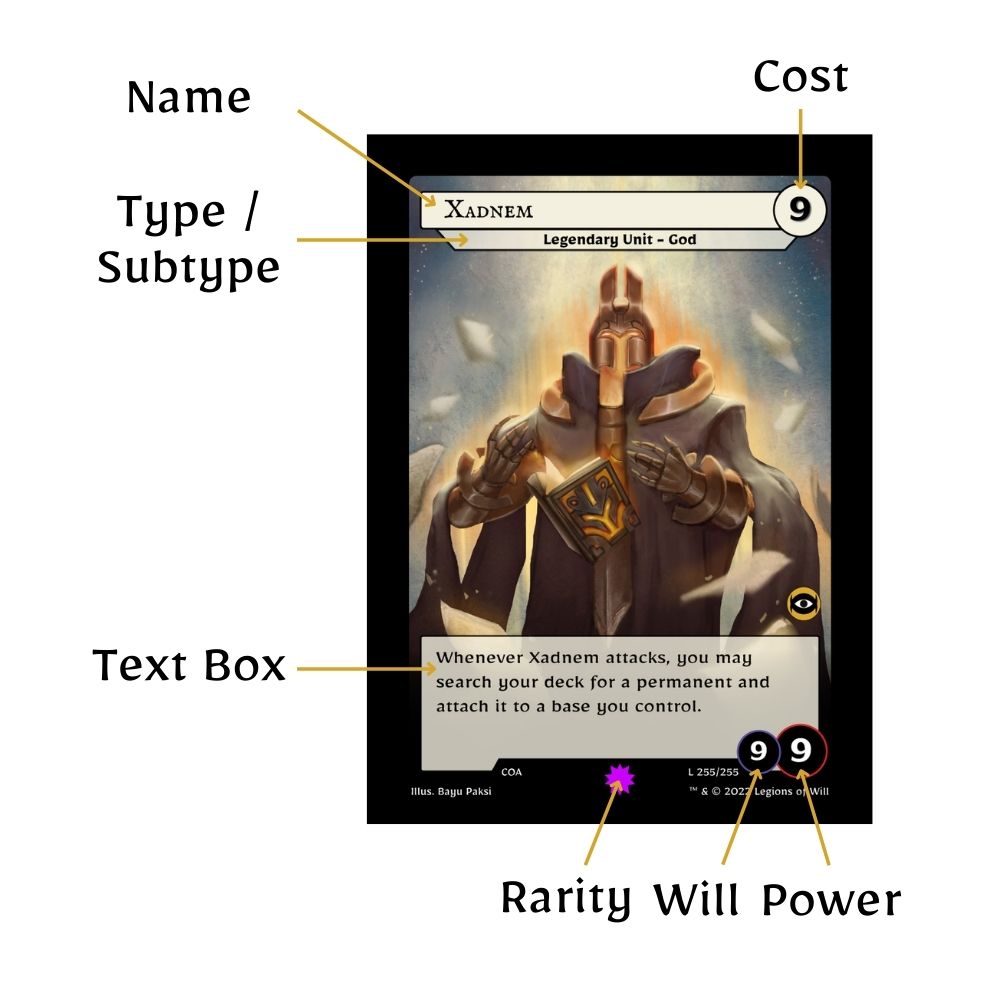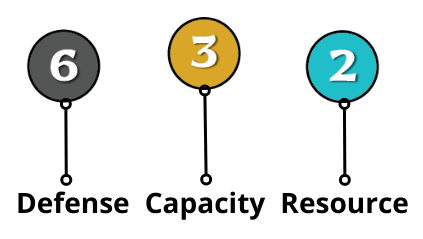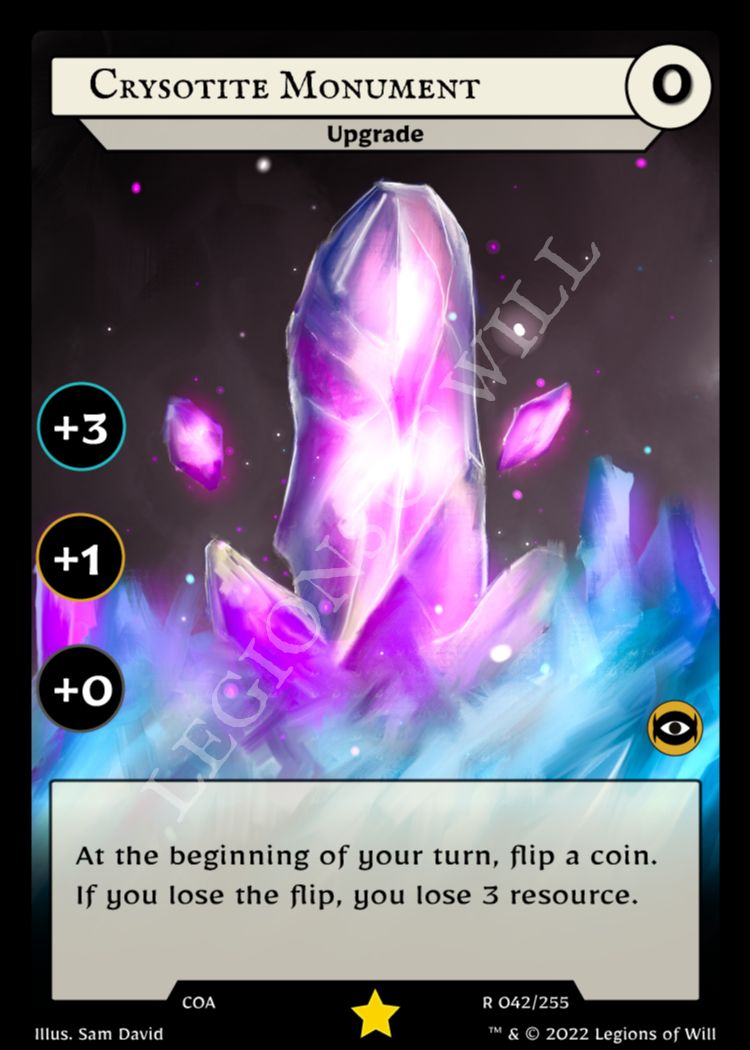Last Updated: September 11th, 2023
CONTENTS
GAME DEFINITIONS
Deck: You begin the game with your deck of cards, each face down in a pile. Your deck remains as it was after shuffling before the start of the game. This is where you draw cards. Each player has their own deck of cards. No players are allowed to look through any deck of cards, unless an effect mentions otherwise. Your deck must contain no less than 40 cards, excluding bases. You can not have more than four copies of any specific card and no more than one copy of a specific upgrade or legendary. This may change depending on the format.
Hand: When you draw a card it goes into your hand. When you start the game, draw two cards. Your maximum hand size is two. You must not exceed your maximum hand size, unless an effect mentions otherwise. If you have more cards in hand than your maximum hand size, you do not draw a card. You must discard down to hand size at the end of your turn. If you have less cards in hand than the maximum hand size, draw a card from your deck. equal to the difference. No one is allowed to see a player's hand, unless an effect mentions otherwise. Each player has their own hand.
Resource: Resource is used to play cards. Each player has their own resource. A player's resource can be written down or represented with a dice or anything that distinguishes a number. A player gains resource from their base(s) at the start of their turn. You can also gain resource from other cards which produce an effect. Your collection of resources is also referred to as a reserve. Your resource does not go away at the end of your turn. The maximum amount of resource you can have in your reserve is 20. You can not have less than 0 resource.
Battlefield: The battlefield is the entirety of the play area where all player's permanents are placed. At the beginning of the game only three bases for each player are on the battlefield. The order of your bases is entirely up to you, prior to starting the game.
Graveyard: The graveyard pile is where your cards go after they have been played, discarded or removed from the battlefield. Cards in the graveyard pile are placed face up. All players can see what cards are in a graveyard pile. Each player has their own graveyard pile.
Event: An Declare your unit(s) as attacker(s) by rotating the units that met their will requirement, unless an effect mentions otherwise. Players may respond to this event. At this point, a player can not prevent any unit(s) from attacking. . Players can respond to an event if they choose. This creates a
chain of events. If a player responds to an event, then that event takes place before the original event can resolve. Events resolve in order from last played to first played.
GETTING STARTED
To start the game, place your deck and three base cards on the battlefield.
Decide who goes first. You may roll a dice or flip a coin to decide who goes first. Whoever goes first starts the game. If a player has lost a previous match, then that player decides who goes first for the second match.
After you've decided who will be going first, choose which base you are starting with face up. You can't start the game with a legendary base face up.
Shuffle your deck of cards. Draw a hand of two cards and decide if you want to begin the game with those two cards.
Mulligan: You may choose to put any number of cards from your hand back into your deck and shuffle. You may do this up to two times.
You do not draw cards at the beginning of your turn. If you have less cards in hand than the maximum hand size, you must draw a card, if able, equal to the difference. Whenever you have less cards in hand than the maximum hand size, draw cards equal to the difference, if able.
How To Win: In order to win the game you must take out all three of your opponent's bases. If a player has no bases revealed, they lose the game. You can not lose the game for having zero cards in your deck.
PARTS OF A CARD
Each Legions of Will card, except for bases and traps, contains a resource cost located in the top right corner. This is how much resource you need to play that card.
Every card features a rarity symbol on the bottom center of the card.
Bronze circle = Common
Silver diamond = Uncommon
Gold star = Rare
Purple star = Legendary
Some cards have abilities. These will appear in a text box located at the bottom half of the card. Text boxes contain abilities and sometimes reminder text in parentheses to help explain what they do.
Units have two numbers in the lower right corner. The larger red circle represents that card’s power. (A unit with greater power will destroy a unit with lesser power. If the power is the same, then both units are destroyed.) The smaller purple circle represents that card’s will. A unit can only attack if it has enough will. When you decide which unit you are attacking with, you will roll a 12-sided dice. If the result is greater than that unit's will, then that unit can attack.
Bases and Upgrades have three numbers that represent its defense, capacity and resource production.
• Grey (bottom left/bottom) represents Defense
• Gold (middle) represents Capacity
• Turquoise (bottom right/top) represents Resource
The defense represents how much damage a base can take within a single turn before getting destroyed.
The capacity represents how many units, upgrades and/or traps can be attached to that base.
The resource represents how much resource a base produces at the start of your turn.
The numbers associated on an upgrade card represent a modifier. This modifies that base's defense, capacity and resource.
If there are more permanents attached to a base than the capacity of that base, you must immediately sacrifice or send permanents equal to the difference into your graveyard.
CARD TYPES
BASES
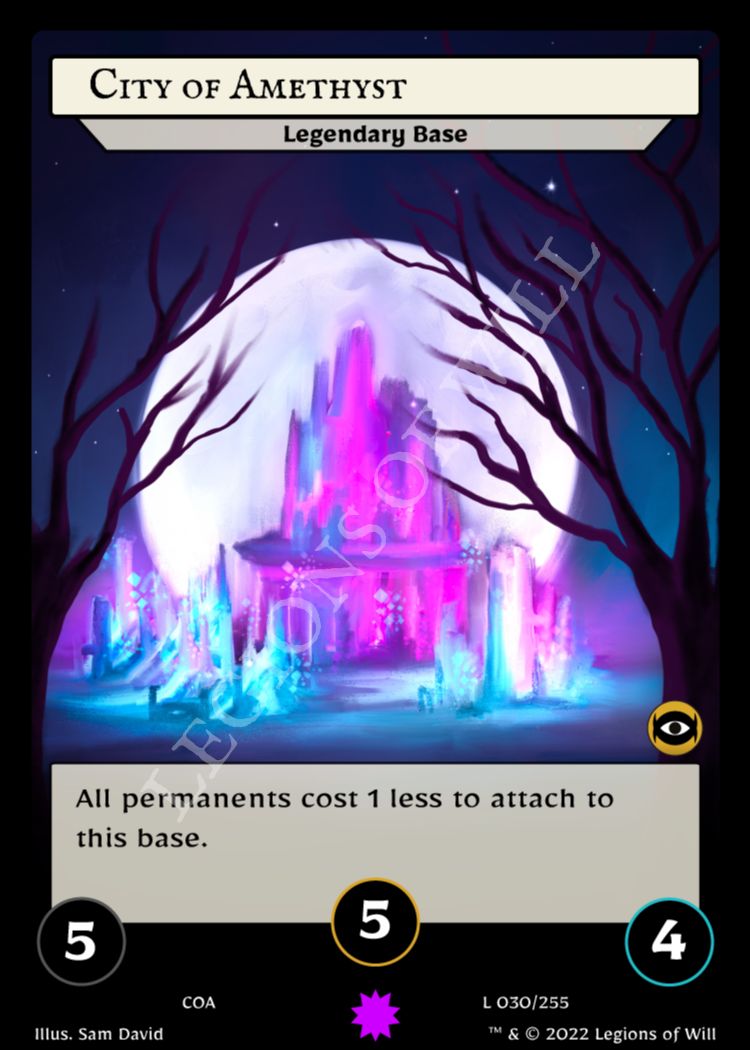
Each player begins the game with three unique bases on their side of the battlefield.
You can not have multiple copies of a specific base. You can not have more than 1 legendary base. Base cards are the foundation of the game. If none of your bases are revealed, then you're out of the game. Bases produce resources which you need to play cards. At the beginning of your turn, you will add an amount of resource to your reserve equal to the total amount of resource your base(s) can produce. Your resource stays in your reserve until it is spent. It does not go away at the end of your turn. Your base's
capacity limits the amount non-base permanents or units, upgrades and traps that are attached to it.
If there are more permanents attached to a base than the capacity of that base, you must immediately sacrifice or put permanents equal to the difference into your graveyard. The defense represents how much damage that base can take in a single turn before being destroyed. Damage dealt during a turn goes away at the end of turn. If a base is destroyed, then it is turned facing down. Everything attached to that base is destroyed or sent to the graveyard.
Permanents can only exist on the battlefield if they are attached to a base. If a permanent is not attached to a base, then it is immediately sent to the graveyard.
On the back of a base card is a number. You will need that much resource to
activate your base, turning it face up. You may activate a base any number of times, at no extra cost, flipping it face up after it’s been destroyed. You can only activate a base during your
main phase. If all of your bases are destroyed you lose the game.
ACTIONS
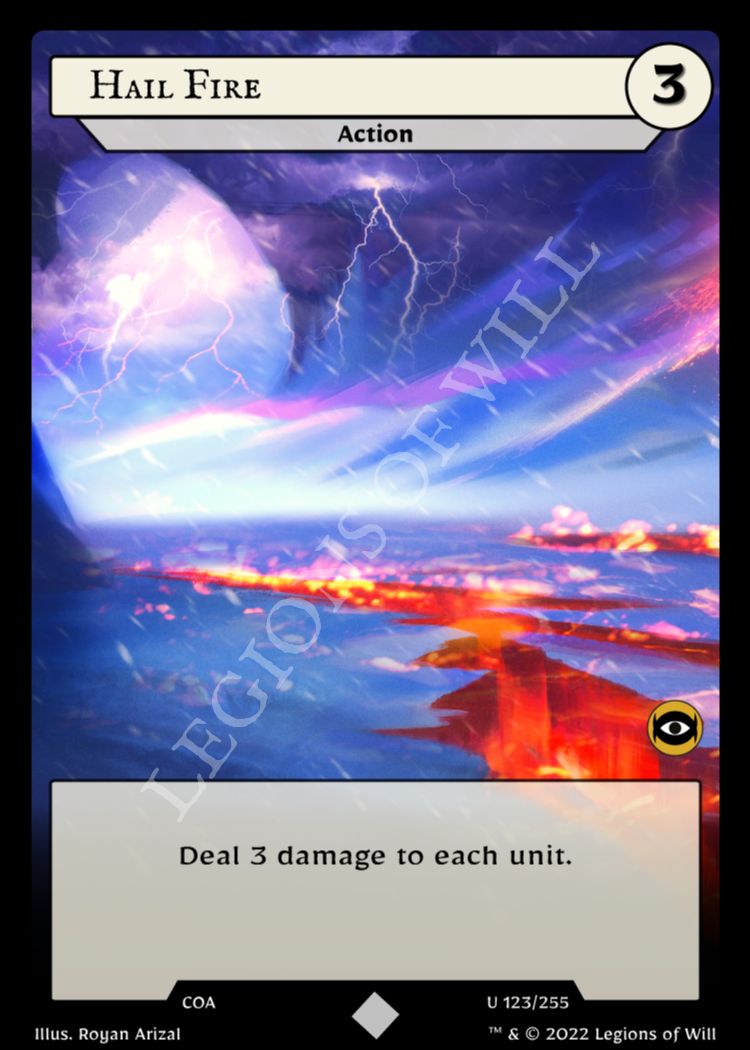
Action cards are cards that can be played at anytime during the game. You can play an action card during your main phase or in response to an
event. Events are when a player plays a card, moves units between bases, moves between phases or when an effect occurs.
Your deck must not contain more than 4 copies of a specific action card in your deck. Your deck must not contain more than 1 copy of a specific legendary action card in your deck. This may change depending on the format. To play an action card, pay the resource cost located at the top right corner. When you play an action, another player may respond. If no players have a response, then the effect of the action will resolve. After the effect resolves, the action card goes into your graveyard pile. If you have less than the maximum hand size, draw a card.
Some action cards have a subtype associated with it. For example,
Redeem. An action card with the Redeem subtype can be placed into your graveyard pile after paying the resource cost of that card. If you have less than the maximum hand size, draw a card.
UNITS
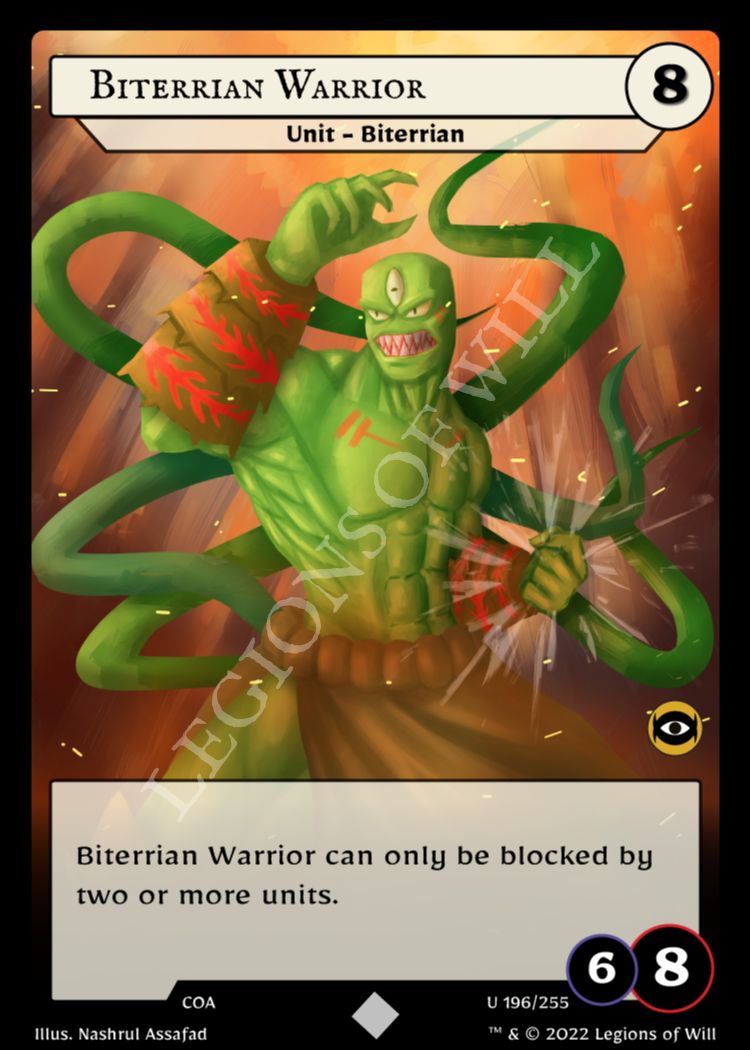
Units are permanent cards that can attack and defend a base. Your deck must not contain more than 4 copies of a specific unit card in your deck. Your deck must not contain more than 1 copy of a specific legendary unit card in your deck. You can't control more than two copies of the same legendary permanent. If you do, send one to its owner's graveyard. This may change depending on the format. Units can attack your opponents base(s) and defend your own base(s) from opposing attacks. You may move a unit from one base you control to another as long as it did not enter the battlefield or attack that turn. You may do this only once and only during your turn, unless an effect mentions otherwise. Units that have moved from one base to another cannot attack that turn, unless an effect mentions otherwise. Units can only be placed in bases that have available capacity.
Units are played during your turn for their resource cost, located at the top right corner. Units have a will requirement to attack. A unit's will is represented by the smaller purple circle located at the bottom right corner of a unit card. Whenever a unit attacks, you must roll a 12-sided dice. As long as the result is greater than or equal to that unit's will, it can attack. Whenever a unit attacks, it is rotated to signal that it is rested and is unable to block or move until your next turn. The red circle located at the bottom right corner represents a unit's power. The power of a unit represents how much damage it can deal and how much damage it can take before being destroyed. A unit with 0 power is destroyed. Units that are destroyed enter the graveyard pile.
The subtype of a unit card, or unit type, is located underneath that card's name. For example, Biterrian Warrior, is a Biterrian unit.
UPGRADES
Upgrades are permanent cards that attach to a single base. Upgrades modify your base’s capacity, defense and/or resource. Your deck must not contain more than 1 copy of a specific upgrade card in your deck. You can't control more than two copies of the same legendary permanent. If you do, send one to its owner's graveyard. To play an upgrade, pay the resource cost located at the top right corner and attach it to a base you control. Some upgrades contain an effect. Upgrades with effects will contain a text box explaining the effect. If an upgrade is attached to a base, and the base is destroyed, that upgrade is also destroyed and will be sent to the graveyard pile. You can not move upgrades, unless an effect mentions otherwise.
TRAPS
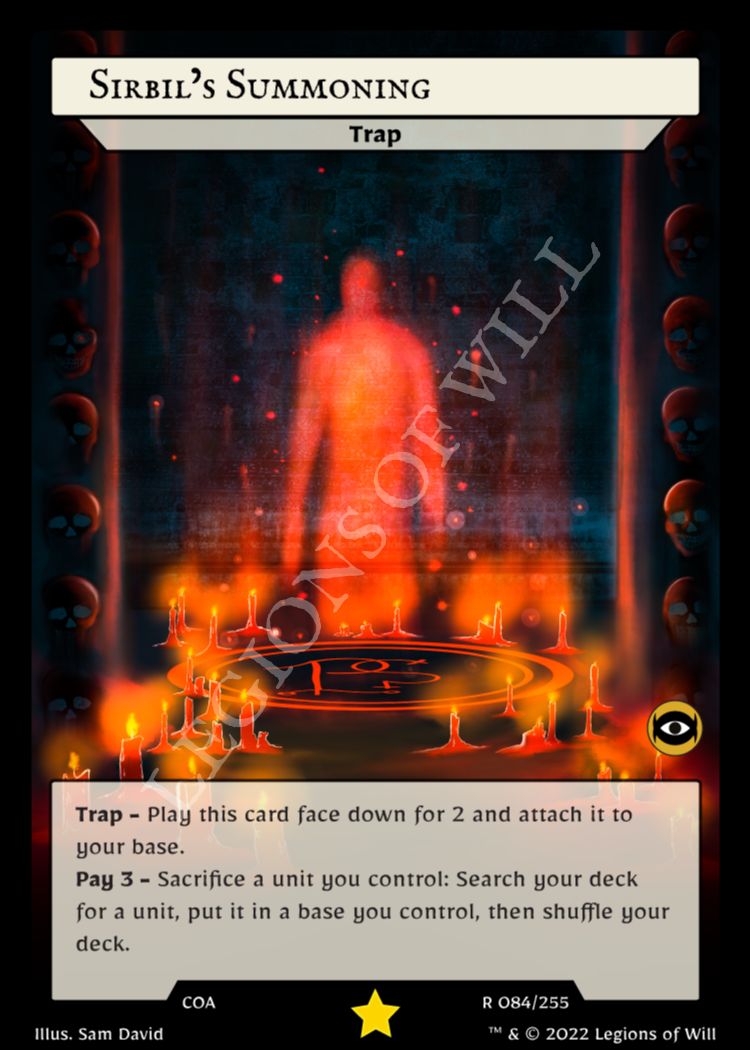
Trap cards are permanent cards that are attached face down, to a single base. Only the player that played the trap card can look at that card. No players are allowed to see face down trap cards that they do not own, unless an effect mentions otherwise. Your deck must not contain more than 4 copies of a specific trap card in your deck. Your deck must not contain more than 1 copy of a specific legendary trap card in your deck. This may change depending on the format. Trap cards do not have a resource cost at the top right corner. Instead, you must pay 2 resource to attach it to a base you control. The cost of all trap cards to attach to a base is 2. Trap cards have an activation cost that will cause an effect to occur. You may pay the activated cost of the trap, in response to your base being attacked, targeted by an opponent, or destroyed. When you pay the activation cost of a trap, an effect will occur. When you activate a trap, you turn it face up, revealing that card to all players. After the effect of that trap card resolves, it is then sent to the graveyard pile. You can only activate a trap when it is applicable. You can not move traps from one base to another, unless an effect mentions otherwise. Traps that are fatigued can't be activated.
COUNTERS
Counters are markers that are placed on permanents that represent an effect. Dice, marbles or paper are a few examples of objects that can be used to represent counters.
Poison Counters are placed on units. At the beginning of a player's, that players adds one poison counter to each unit they control with a poison counter. A unit with poison counters equal to or greater than its power is destroyed. Poison counters do not lower a unit's power or cause any other effect.
Ice Counters can be placed on units and/or upgrades. A unit with ice counters on it cannot attack, block or move between bases. An upgrade with ice counters on it does not modify a base's defense, capacity or resource. At the beginning of a player's turn, that player removes one ice counter from each permanent they control.
Will Counters can be placed on units. A unit with a will counter gains -1 will.
TURNS & PHASES
During each player's turn, any player may respond to them entering a phase. Each player's turn consists of the following phases:
1. Begin Phase - Your begin phase is the first phase at the begins at the start of your turn. Your begin phase consists of your reset step & effect step.
A. Reset Step - The reset step is the first step of the begin phase. Reset permanents you control back to their original state, if able. Permanents that were rotated, or rested, signaling their inability to block or move, are oriented back to their original state.
B. Effect Step - The effect step is the second step of the begin phase. At the beginning of the effect step, any abilities that occur during the effect step go on the chain of events.
C. Resource Step - The resource step is the third and final step of the begin phase. Gain resource equal to the total amount of resource your base(s) produce(s).
2. Main Phase 1 - During your main phase, you may play cards or move units between bases. You may do this in any order. Whenever you play a card or move a unit, a player may respond to that event. When you are ready to end your main phase and move on to your next phase, you must let your opponents know.
3. Battle Phase - You may choose to go to your battle phase once during your turn. You can choose to go to your battle phase after your main phase or skip your battle phase. During your battle phase you may attack with any number of units. Your battle phase consists of the following steps:
A. Attacking - You are not allowed to attack if it is the first turn of the game. Declare which unit(s) you wish to attack with and which base they will be attacking. Roll a 12-sided dice for each unit that you wish to attack with. The result of each dice roll must be great than or equal to that unit's will in order for that unit to attack and be declared as an attacker. If you roll a number that is lower than that unit's will, that unit does not attack, therefore, that unit does not attack. It does not become rested and may still block or move. At the end of this step, rest all units that met the requirements to attack, unless an effect mentions otherwise. These units are officially declared attackers.
B. Blocking - The defending player may choose to block with any number of units they control. The defending player determines which of their defending units are blocking. A single unit may can only block a single unit, unless an effect mentions otherwise. However, multiple units may block a single unit, unless an effect mentions otherwise. Units can only defend the base that they are stationed in. A player may respond to this event.
C. Damage - Damage is dealt and any units that is destroyed are sent to the graveyard pile. A unit with power greater than or equal to another unit's power will destroy that unit. A unit with 0 power is destroyed. Any base that is destroyed is turned face down. Any units, upgrades or traps attached to that base are destroyed and sent to the graveyard pile.
4. Main Phase 2 - During your second main phase you may do anything you can during your first main phase.
5. End Phase - Discard down to hand size. Any effects that occur at the end of a turn take effect now. After these effects resolve. The turn officially ends and the next player begins their turn.
RESPONDING TO AN EVENT
When an event occurs, a player may respond by playing an action card or activating a trap, if applicable. This creates a chain of events. Priority to respond to an event occurs in the order of the turns. The player whose turn is next gains priority to respond to an event, followed by the next player. Each time a response occurs, a player may respond. Once there are no more responses to an event, the chain of events begins to resolve. The last event that occurs will resolve first, followed by the previous, until all events are resolved.
CHAIN OF EVENTS
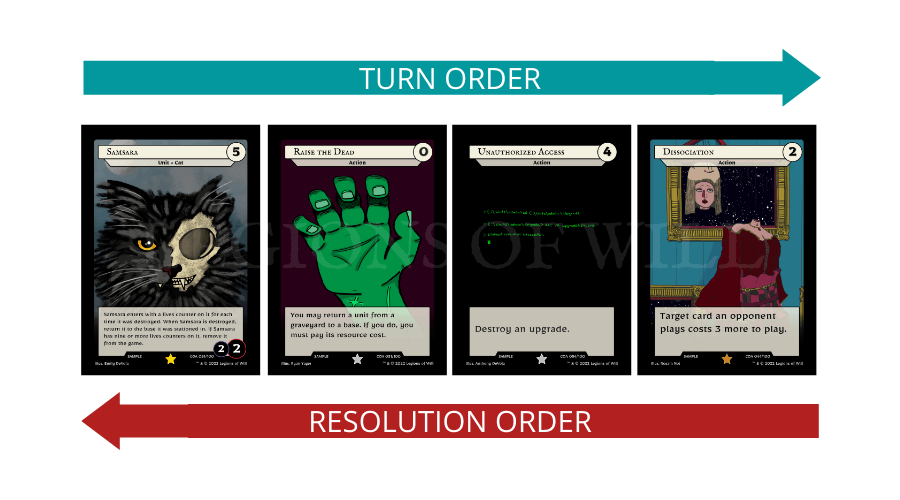
An event occurs when a player plays a card, moves units between bases, moves between phases or when an effect occurs. The following are some examples of an event.
• Moving between phases
• Playing cards
• Attacking
• Blocking
• Moving units
• Activating traps
• Gaining resource
• Ending a turn
GAMEPLAY SUMMARY
• At the beginning of your turn, add resource to your reserve equal to the total number of resource produced by your base(s).
• You do not draw a card at the beginning of your turn. Draw cards equal to the difference of your maximum hand size.
• During your turn, you may activate a base, play cards, move units or attack an opponent’s base.
• Destroy your opponent's bases to win!

